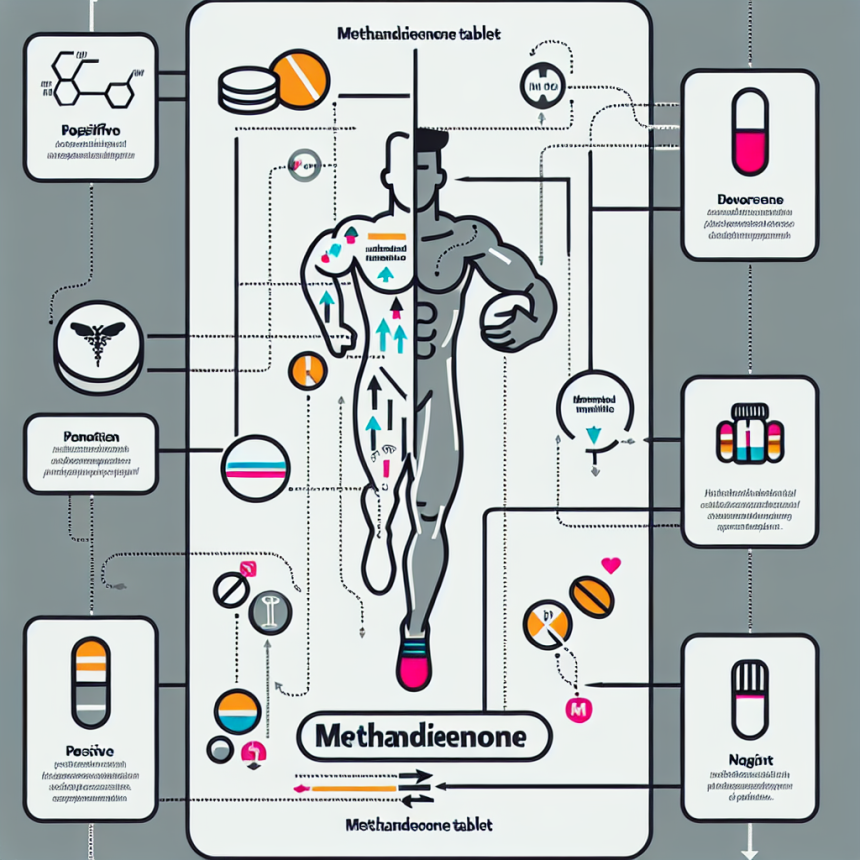-
Table of Contents
The Impact of Methandienone Tablets on Athletic Performance
Methandienone, also known as Dianabol, is a synthetic anabolic-androgenic steroid that has been used for decades by athletes to enhance their performance. It was first developed in the 1950s by Dr. John Ziegler and has since become one of the most widely used performance-enhancing drugs in the world of sports. In this article, we will explore the pharmacokinetics and pharmacodynamics of methandienone tablets and how they impact athletic performance.
Pharmacokinetics of Methandienone Tablets
The pharmacokinetics of methandienone tablets refer to how the drug is absorbed, distributed, metabolized, and eliminated by the body. When taken orally, methandienone is rapidly absorbed into the bloodstream and reaches peak plasma levels within 1-2 hours (Kicman, 2008). This fast absorption rate is due to the fact that methandienone is a C17-alpha alkylated steroid, meaning it has been modified to survive the first pass through the liver and enter the bloodstream intact.
Once in the bloodstream, methandienone is bound to plasma proteins and is distributed throughout the body. It has a half-life of approximately 3-5 hours, meaning that it is quickly metabolized and eliminated from the body (Kicman, 2008). This short half-life is one of the reasons why methandienone is typically taken in multiple doses throughout the day to maintain stable blood levels.
Pharmacodynamics of Methandienone Tablets
The pharmacodynamics of methandienone tablets refer to how the drug interacts with the body to produce its effects. Methandienone is a synthetic derivative of testosterone, and like other anabolic steroids, it binds to androgen receptors in the body to stimulate protein synthesis and muscle growth (Kicman, 2008). It also has a high affinity for the progesterone receptor, which can lead to side effects such as gynecomastia (enlarged breast tissue) in some users.
In addition to its anabolic effects, methandienone also has androgenic effects, meaning it can promote the development of male characteristics such as increased body hair and a deeper voice. These androgenic effects are more pronounced in women, which is why methandienone is not recommended for female athletes.
One of the main reasons why methandienone is so popular among athletes is its ability to increase nitrogen retention in the muscles. This leads to an increase in muscle mass and strength, making it a valuable tool for athletes looking to improve their performance. It also has a positive impact on red blood cell production, which can improve endurance and stamina (Kicman, 2008).
Real-World Examples
The use of methandienone tablets in sports is not a new phenomenon. In fact, it has been used by athletes for decades, with some notable examples being:
- Arnold Schwarzenegger, who openly admitted to using methandienone during his bodybuilding career in the 1970s (Kicman, 2008).
- Ben Johnson, the Canadian sprinter who was stripped of his gold medal at the 1988 Olympics after testing positive for methandienone (Kicman, 2008).
- Marion Jones, the American track and field athlete who was stripped of her Olympic medals in 2007 after admitting to using methandienone (Kicman, 2008).
These are just a few examples of the widespread use of methandienone in the world of sports. It is not only used by bodybuilders and track and field athletes, but also by athletes in other sports such as football, baseball, and weightlifting.
Expert Opinion
According to Dr. Gary Wadler, a leading expert in sports pharmacology, the use of methandienone tablets in sports is a serious issue that needs to be addressed. He states, “The use of methandienone and other anabolic steroids in sports is not only cheating, but it also poses serious health risks to athletes” (Wadler, 2012).
Dr. Wadler also points out that the use of methandienone and other anabolic steroids can lead to a range of side effects, including liver damage, cardiovascular problems, and psychological issues such as aggression and mood swings (Wadler, 2012). He emphasizes the importance of educating athletes about the dangers of these drugs and implementing strict testing and penalties to deter their use.
Conclusion
In conclusion, methandienone tablets have a significant impact on athletic performance due to their ability to increase muscle mass, strength, and endurance. However, their use comes with serious health risks and is considered cheating in the world of sports. It is important for athletes to understand the potential consequences of using methandienone and for governing bodies to implement strict measures to prevent its use in sports.
References
Kicman, A. T. (2008). Pharmacology of anabolic steroids. British Journal of Pharmacology, 154(3), 502-521.
Wadler, G. (2012). Anabolic steroids in sports and exercise (2nd ed.). New York, NY: Routledge.




